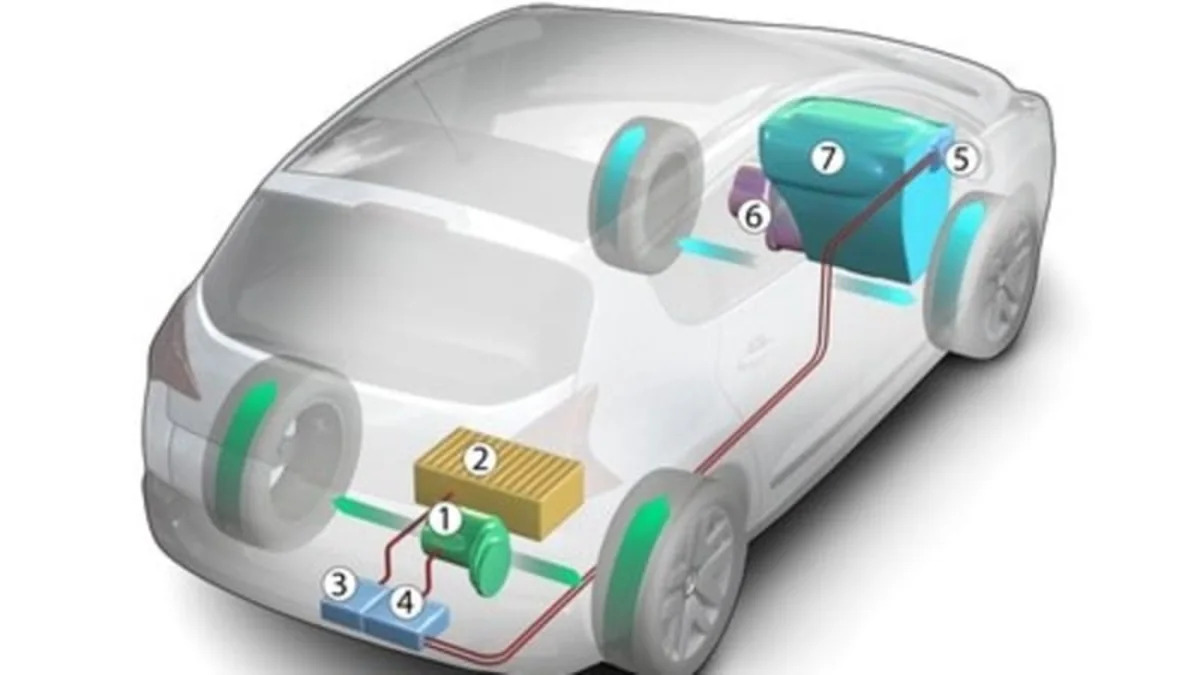Peugeot-Citroen HYmotion4 hybrid drive architecture
Traditionally, automakers use the biggest auto shows in their home countries as a platform to display their latest and greatest ideas, both aesthetic and technological. Such was clearly the case this week at the Paris Motor Show for PSA, the parent company of Peugeot and Citroën. One of the technical highlights on the stands of both PSA brands was something called HYmotion4, a new through-the-road hybrid system. HYmotion4 was featured on four different vehicles including the Peugeot RC and Prologue and the Citroën Hypnos and C4 WRC.
The idea of a through-the-road hybrid system is not new and has been used previously by a number of manufacturers. To date however, no mainstream manufacturer has produced such a hybrid configuration. In engineering a car, there are many ways to skin a cat, and judging by the number of examples that PSA showed in Paris, it seems that Peugeot and Citroën may follow this path for production as an alternative to the hybrids being produced by the likes of Toyota, Ford, GM and others. Learn more about through-the-road hybrids after the jump.
[Source: Peugeot]
It's only been a decade since the Prius was first sprung on the world but its Hybrid Synergy Drive configuration can already be thought of as traditional in light of new variations like GM's E-Flex and PSA's HYmotion4. Systems like HSD integrate the electric drive components with the transmission for the internal combustion engine creating what can be called a power-split hybrid. If done well, this can make for fairly compact packaging that can often fit into the same space as a conventional drivetrain. However, it is mechanically complex. These systems typically use an electronically variable planetary gear set to seamlessly blend the drive torque from the engine and motor. Such a system is more expensive to manufacture and complex to control.

The approach taken by PSA separates the electric and internal combustion drive elements. The term "through the road" actually describes how the mechanical interaction takes place. These systems typically put an internal combustion powertrain at one end of the vehicle driving one axle and a completely separate electric drive system at the other end. The advantage is that mechanical complexity is reduced and the existing conventional powertrain can be largely carried over unchanged. The electric drive can then be added as a module at the other end of the vehicle. This means the vehicle also has an on-demand all-wheel-drive system. The interaction between the internal combustion engine and electric drive is completely done by wire and either of the systems can be turned off to drive the vehicle as an electric or ICE system.
Of course, the trade off is that the engineers have to package a separate drive system where there wasn't one before. Compared to a mechanical all wheel drive setup, it's actually easier because no driveshaft is needed and the electric drive motor tends to be fairly compact. Unfortunately, a through-the-road hybrid typically needs to retain the conventional starter and alternator on the engine. An integrated hybrid, can use the motor to restart the engine and charge the 12V because of the direct mechanical connection.
A through-the-road hybrid relies on the traction of the road to transfer torque. On dry roads, the motor can restart the engine, but a slippery road may not be able to transfer enough torque to the wheels to turn over the engine. The control of the power flow in the PSA HYmotion4 system is integrated with the electronic stability control allowing the power balance between the front and rear axles to be used to adjust the dynamic behavior of the vehicle. Because of the indirect connection between the electric and IC drive systems, the blending control is somewhat less sensitive and easier to implement. Such a system could prove be more a more affordable way to implement diesel hybrids because of the reduced mechanical complexity and cost.
Demonstrating the flexibility of the architecture, PSA showed four very different vehicles using it at the Paris Show, as mentioned above. The RC concept is a sleek 4 door coupe with a gas engine in the rear and the electric drive in the front. The Prologue is a compact crossover with a diesel in the front and electric drive in the rear. The Citroën Hypnos is a larger CUV with front diesel and real electric drive and the Citroen C4 WRC is a hybrid rally car with gas power to the front wheels and electric drive at the back.

Another excellent demonstration of the viability of through-the-road hybrid systems occurred during the Challenge X student design competition that was sponsored by General Motors and the Department of Energy. Teams in that competition converted Chevy Equinox crossovers to alternative drivetrains. Eleven of the seventeen university teams chose do build through-the-road hybrids using a combination of gas, ethanol and diesel fueled engines. The competition was ultimately won by the team from Mississippi State University with a through-the-road hybrid using a B20 fueled turbodiesel to drive the front wheels and a 67 kW motor at the rear.


Sign in to post
Please sign in to leave a comment.
Continue